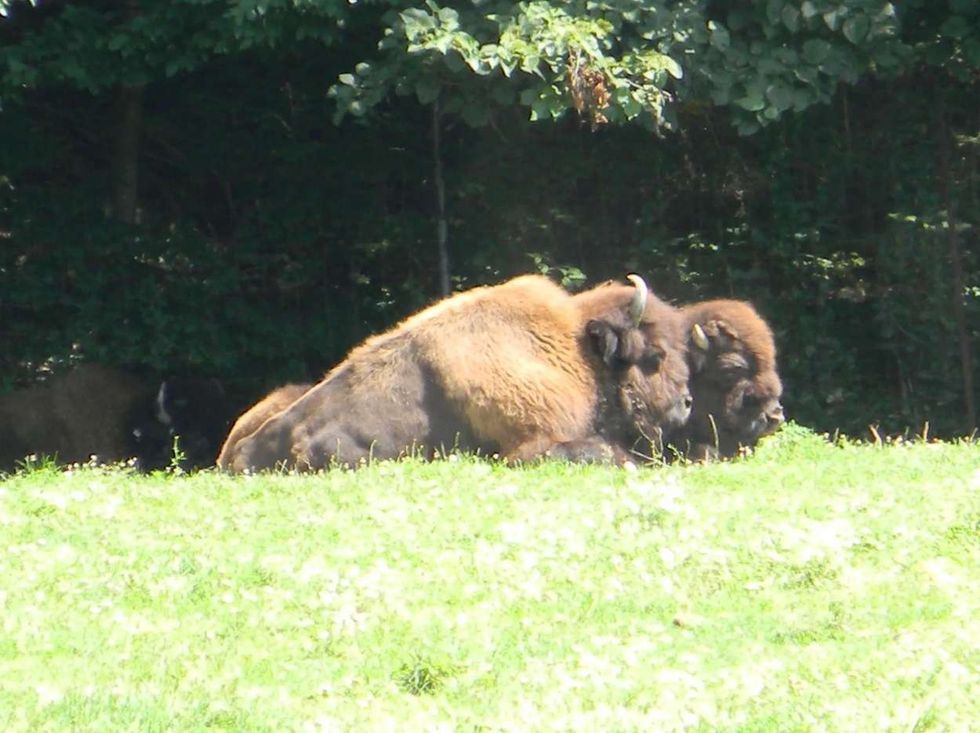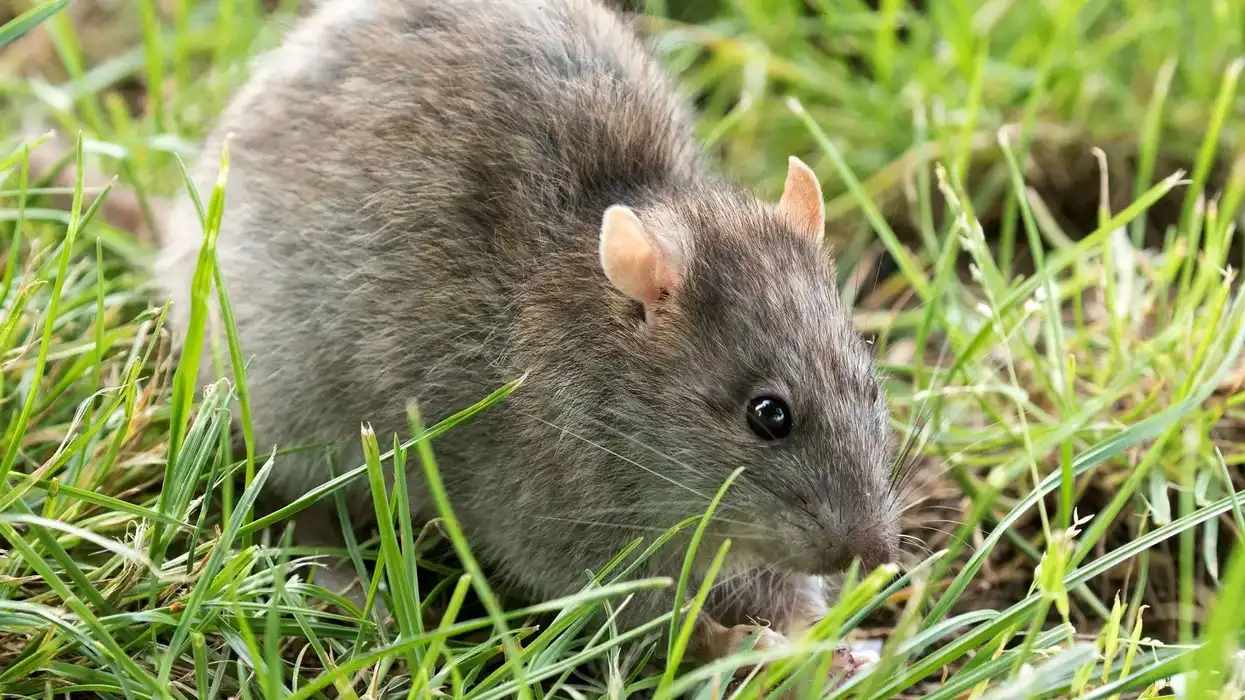The wood bison (Bison bison athabascae) is one of the largest bovids currently existing in the world. Found in the U.S, Canada, and Mexico - the wood bison is North America's longest and heaviest terrestrial animal.
The wood bison is also known and recognized as the mountain bison and is a subspecies of the American bison. Interestingly, the ancestors of the modern American bison can be traced back to southern Asia thousands of years ago.
Due to the low population of the wood bison, several conservation projects have been set up in order to maintain the subspecies.
Several national parks, such as the famous Yellowstone National Park, Elk Island National Park, and the Alaska Wildlife Conservation Centre, are trying to restore the population of this species. The Alaska Department of Fish and Game has been very enthusiastic and dedicated to this project.
The Fish and Game department began to introduce 100 animals to the Innoko river area in 2015. Keep reading for more amazing facts about the wood bison!
If you liked this article with interesting wood bison facts, also check out the other articles with some great facts about bison and buffalo.
Wood Bison Interesting Facts
What type of animal is a wood bison?
The wood bison is a type of bison.
What class of animal does a wood bison belong to?
The wood bison belongs to the Mammalia class of animals.
How many wood bison are there in the world?
According to the latest research carried out by Canadian researchers, there are approximately 11,000 wood bison in the world.
Where does a wood bison live?
The wood bison, a subspecies of American bison, is found only in North America in various locations, including Native American land, wildlife refuges, private lands, conservation projects, and national parks. Their original range in northern Canada extends through forest regions, but today, free-roaming wood bison populations can be found in the Northwestern Territories, near the Innoko River and Alberta.
The Innoko River is situated in Alaska. They are also found in all 50 states of the U.S. and are even found in Mexico.
What is a wood bison's habitat?
The typical habitat of wood bison species varies based on their location. While some wood bison prefer to live in open land and meadows among coniferous forests, some wood bison reside in the native savannas with grasses and sedges. They also prefer to live in a land where they can get access to water daily during the summer.
Who do wood bison live with?
According to scientific research, wood bison, both males, and females roam around in herds that are arranged according to sex, age, season, and habitat. The females roam in separate herds along with their young and a few older males.
The males, also called bulls, live alone or in smaller herds. The males join the herds of the females during the mating season.
How long does a wood bison live?
The average lifespan of a free wood bison is 10-20 years in the wild, but some animals can live up to an older age while in captivity.
How do they reproduce?
Females give birth to a young calf every other year after they reach physical maturity. The mating season occurs from July-September, and the young calves are born in spring from late March through May. The gestation period for females lasts for nine months.
After being born, a young calf weighs around 30-70 lb (13-31 kg). The reproduction of wood bison and young calves being born is dependent upon several factors, including their habitat range. Therefore, loss of habitat can cause a severe decline in their population.
What is their conservation status?
The wood bison is considered to be Threatened under the Endangered Species Act of 1973 as set up in the United States of America. While the wood bison is Not Listed by the International Union for Conservation of Nature (IUCN) in its Red List, it is a subspecies of the American bison, which is listed as Near Threatened.
The wood bison has an endangered status due to many factors, including hunting, destruction of habitat, and several diseases. These animals suffer from serious conditions such as bovine brucellosis disease, tuberculosis, and even anthrax.
They are also susceptible to hybridization with plains bison leading to their gene pools becoming poor. The Alaska Department of Fish and Game began to manage these diseases in order to safeguard their population but have not been able to control them so far.
Wood Bison Fun Facts
What do wood bison look like?

The wood bison has a big, triangle-shaped head, a thin beard, and a rudimentary mane on their throat with a poorly-demarcated cape. They have curved horns that point upward and extend above their head.
Apart from their horns which point upward, they also have a hump on their shoulders. They have a pronounced hump in front of their legs.
They have hairless legs and rounded hooves. Their massive bone structure and forward hump of the wood bison has evolved throughout the years to sweep and bury their head through the snow to get access to their food.
They have a dense coat of hair whose color ranges from dark brown to black. Wood bison shed their winter coat in early spring as the temperature starts to rise once again and by mid-summer, their coat is replaced with completely new hair.
How cute are they?
Wood bison are not cute in the conventional sense. With their huge bodies and thick hair, they are not very approachable either.
How do they communicate?
Bison communicate with each other vocally. They make sounds such as grunting and snorting to draw attention. Some also think that bison use chemical cues during the reproduction process. Bison can also smell and hear very well, which helps them in detecting danger.
How big is a wood bison?
The range length of the wood bison is between 9.8-12.4 ft (3.0–3.8 m), while their average height is around 4-6 ft (1.5-2.0 m). A wood bison is almost five times the size of a badger which can only grow up to 2 ft (0.6m) tall.
How fast can a wood bison run?
Bison are quite quick in contrast to their huge physique. They are very agile and can run up to 25 miles per hour. In addition to that, they can also spin quickly, are good swimmers, and can jump over high fences.
How much does a wood bison weigh?
Female bison weigh less than male bison, with the average weight of a female being 1100-1200 lb (500-550 kg), while a male wood bison's average weight is between 1430-2400 lb (650-1080 kg).
What are their male and female names of the species?
Male wood bison are called bulls, while female wood bison are referred to as cows.
What would you call a baby wood bison?
A baby wood bison is called a red dog. Bison calves are called red dogs because they are orange-red in color after they are born. After a few months, the color of the hair of these calves starts to change to the normal dark brown, and they begin to grow horns that point upward and their shoulder hump.
What do they eat?
Wood bison are not carnivorous predators but are herbivorous animals that primarily depend on grazing on grass, forbs, and sedges. Due to the kind of cold climate they live in, wood bison often have to search very hard and forage for their food.
Heavy snowfall often obstructs their food source, so the wood bison need to use their heads and neck muscles to dig through the snow. Once the snow melts, they also eat willow leaves and silverberry during the summer months.
Are they dangerous?
Wood bison are not carnivorous, so they are not predators of any other animals found near their habitat. However, people can often get hurt if they get too close to these animals, and the wood bison perceives them as a threat.
One can understand a bison's mood by looking at its tail. If it is hanging down and swinging, that means the bison is calm.
However, if their tail is standing up and erect, then it means that they are ready to charge. These animals are also quite unpredictable and may charge at any moment, so a safe distance must be maintained at all times.
Would they make a good pet?
Wood bison would not make a good pet. They are an endangered species whose natural habitat is in the wild, and they are not known to be friendly to humans.
Did you know...
Recent wildlife conservation efforts have led to the introduction of this bison to Yakutia in Russia. Since Yakutia has a climate similar to that of Canada, the wood bison introduced were seen to be adapting well to their new environment.
What is the difference between a wood bison and a buffalo?
There are three main differences between a wood bison and a buffalo. The buffalo are indigenous to South Asia and Africa, while wood bison are found in North America.
The wood bison has a hump on its shoulders while buffalos do not. Buffalos have larger horns, but the horn of a bison is shorter and more pointed. Buffalos also do not have any beard on their face.
What is the difference between wood bison and plains bison?
There are many differences between the plains bison and the wood bison. The wood bison species is much larger and heavier than the plains bison.
Plains bison can also run much faster at a speed of 40 miles per hour. The wood bison species has larger horns than the plains bison.
They are darker in color than the plains bison and have smaller, pointed beards in contrast to the long beards of the plains bison.
The plains bison's shoulder hump is situated directly above its forelegs, while the wood bison's shoulder hump is situated behind its forelegs. The wood bison is thought to have more primitive ancestry compared to the plains bison, as plains bison are thought to have evolved from two different types of bison.
Here at Kidadl, we have carefully created lots of interesting family-friendly animal facts for everyone to discover! Learn more about some other mammal facts including red squirrel facts or sand cat facts.
You can even occupy yourself at home by coloring in one of our free printable bison coloring pages.









